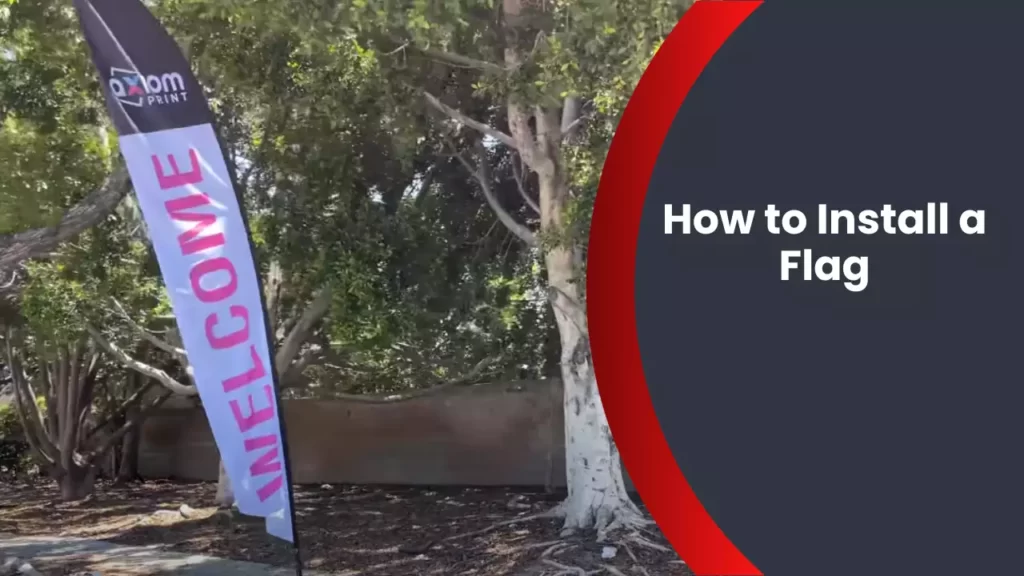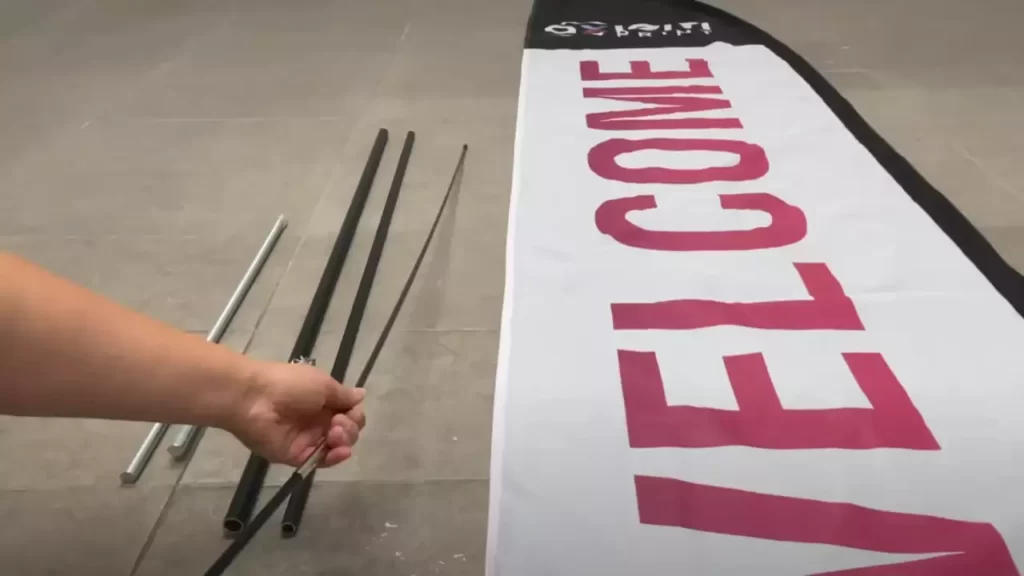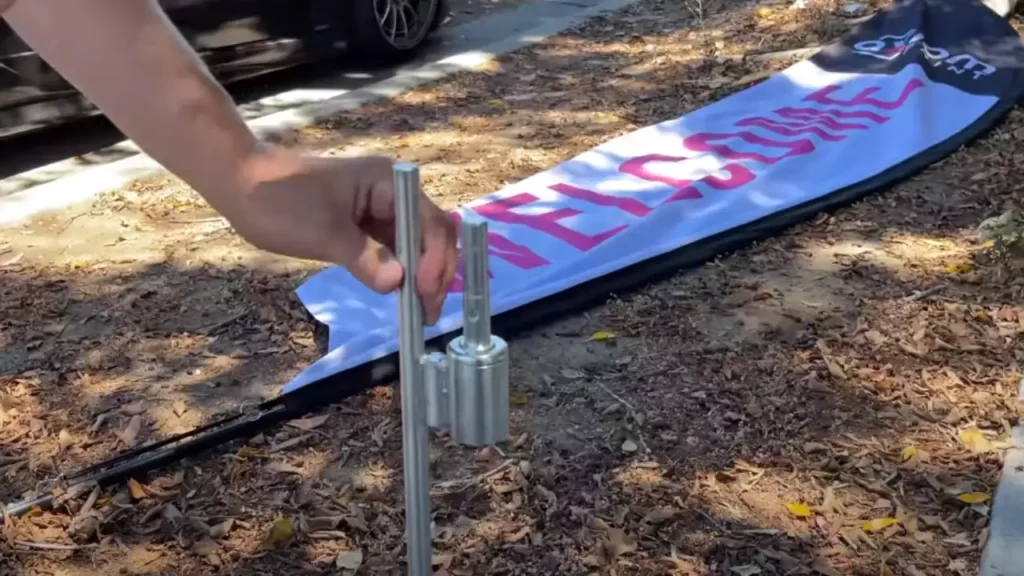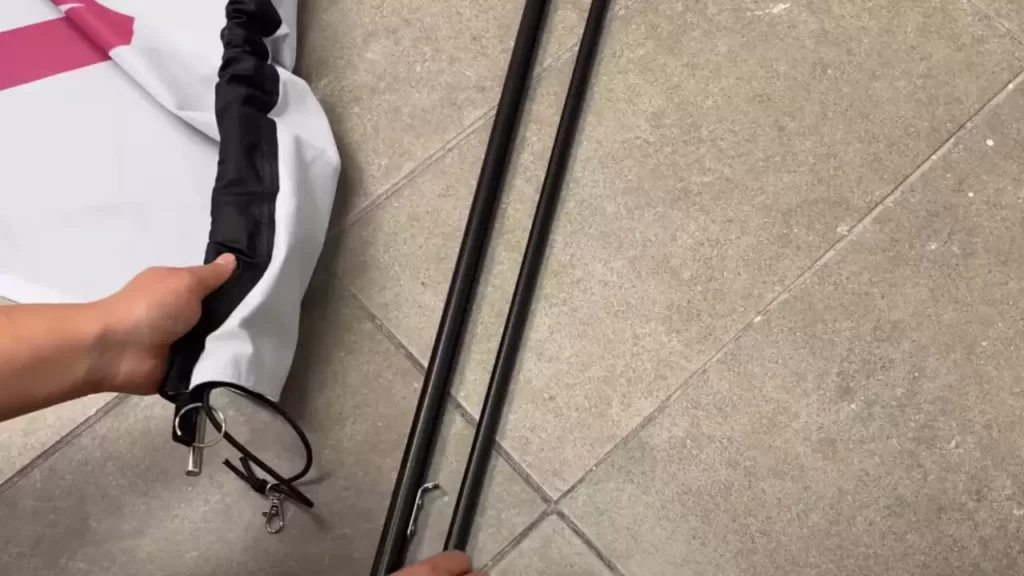To install a flag, first, select a location and determine the height at which you want to display it. Then, use a flagpole or mount to secure the flag in place.
Gathering Materials And Tools
Before installing a flag, there are a few important factors to consider, such as choosing the right flagpole, selecting the appropriate flag, and gathering the necessary tools. By ensuring you have everything you need upfront, you can streamline the installation process and avoid any unnecessary delays.
Choosing the Right Flagpole
When it comes to selecting a flagpole, it’s essential to consider the height, material, and installation method. The height of the flagpole should depend on the intended location and the surrounding structures. A taller flagpole may be suitable for areas with open spaces, while a shorter one might be more appropriate for residential settings.
There are different materials available, such as aluminum, fiberglass, and steel. Each material has its own advantages and durability. For example, aluminum flagpoles are lightweight and resistant to rust, while fiberglass flagpoles are known for their flexibility and resistance to strong winds.
Furthermore, you should decide whether you want an in-ground or a wall-mounted flagpole. In-ground flagpoles require digging a hole, making them suitable for outdoor areas, while wall-mounted flagpoles can be securely attached to buildings or vertical surfaces.
Selecting the Appropriate Flag
The right flag can make a significant difference in terms of aesthetics and durability. Consider the size of the flagpole and the location where the flag will be displayed. A standard flag size generally ranges from 3 feet by 5 feet to 5 feet by 8 feet.
When it comes to flag materials, nylon is a popular choice due to its lightweight nature, vibrant colors, and ability to withstand various weather conditions. Polyester flags, on the other hand, are known for their durability and resistance to fading.
In addition, flags come in different designs, such as national flags, state flags, or custom-made flags. Choose a flag that aligns with your personal preferences or the purpose of the display.
Required Tools for Installation
Ensuring you have the necessary tools will ease the installation process. Here is a list of tools you might need:
- Post Hole Digger: Used for digging the hole when installing an in-ground flagpole.
- Cement Mix: Used to secure the flagpole in the ground and provide stability.
- Level: Helps ensure that the flagpole is properly aligned and straight.
- Tape Measure: Used for accurate measurements when positioning the flagpole and determining the height.
- Screwdriver or Drill: Required for assembling and installing certain types of flagpoles.
- Rope or Halyard: used to raise and lower the flag.
- Flagpole Cleat: Helps secure the rope or halyard to the flagpole.
- Flag Snaps or Clips: Used to attach the flag to the rope or halyard.
- Flagpole Lighting (optional): Adds visibility to the flag during nighttime or low-light conditions.
Make sure you have all the required tools readily available to ensure a smooth and efficient installation process.

Preparing The Installation Site
Before you can proudly display your flag, you need to ensure that the installation site is properly prepared. This step is critical to guarantee the longevity and stability of your flagpole. Paying close attention to locating the ideal spot, checking for underground utilities, and preparing the ground for installation will set the stage for a successful flag installation.
Locating the ideal spot for the flagpole
When it comes to finding the perfect location for your flagpole, there are a few factors to consider. Start by choosing a spot that has good visibility, where your flag can be easily seen. You want your flag to proudly flutter in the breeze, catching the attention of passersby. Look for a location that is free from obstructions such as trees, power lines, or buildings that may block the view of your flag. Additionally, consider the height and size of your flagpole. Ensure that there is enough space for the flagpole to be installed without any interference or safety concerns. Remember, the placement of your flagpole will ultimately determine the impact of your flag display.
Checking for any underground utilities
Prior to digging, it is crucial to check the area for any underground utilities. Hitting a utility line during installation can lead to costly and dangerous consequences. You don’t want to disrupt the supply of essential services or put yourself and others at risk. To avoid this, contact your local utility companies to request an inspection. They will assess the installation site and mark the location of any underground utilities. By doing so, you can proceed with confidence, knowing that you won’t encounter any unexpected surprises during the flagpole installation.
Preparing the ground for installation
Once you have determined the ideal spot and confirmed the absence of underground utilities, it’s time to prepare the ground for installation. Proper preparation ensures the stability and durability of your flagpole. Start by clearing the area of any debris, rocks, or vegetation. Level the ground to provide a solid foundation for your flagpole. If the soil is loose or sandy, you may consider adding a concrete footing for extra stability. This will anchor your flagpole securely into the ground, even during adverse weather conditions. Taking the time to prepare the ground adequately will contribute to the long-lasting beauty and resilience of your flag display.

Installing The Flagpole
If you have just purchased a flag to proudly display outside your home or business, it’s time to learn how to install a flagpole. While it may seem like a daunting task, with the right tools and instructions, you can easily tackle this project yourself. In this guide, we will walk you through the process of installing a flagpole, starting with assembling the flagpole components, digging the foundation hole, and setting and securing the flagpole in the ground. Let’s get started!
Assembling the flagpole components
Before you can install your flagpole, it’s important to assemble all the necessary components. Begin by laying out all the pieces in a clear area, ensuring you have everything you need. Check the instructions provided with your flagpole for a detailed list of the required components. Typically, a flagpole assembly will consist of:
| Flagpole Component | Quantity |
|---|---|
| Flagpole shaft | 1 |
| Flagpole finial | 1 |
| Flagpole truck | 1 |
| Halyard rope | 1 |
| Cleat | 1 |
| Flag snaps | 2 |
| Grommets | 2 |
Once you have confirmed that you have all the required components, carefully follow the step-by-step instructions provided with the flagpole to assemble the pole. Make sure to tighten all bolts and screws securely to ensure the stability and integrity of the flagpole.
Digging the foundation hole
The next step in installing a flagpole is to dig a foundation hole. This hole will provide the necessary support and stability for your flagpole. Use a shovel or post-hole digger to dig a hole that is appropriate for the height and diameter of your flagpole, as specified in the instructions provided. The hole should be deep enough to accommodate a concrete foundation and allow for proper drainage.
Once you have dug the foundation hole, remove any loose rocks or debris from the hole. Ensure that the bottom of the hole is level and free of any obstructions. This will help prevent any future shifting or tilting of the flagpole.
Setting and securing the flagpole in the ground
With the foundation hole prepared, it’s time to set and secure the flagpole in the ground. Begin by placing the assembled flagpole into the foundation hole. Ensure that the pole is plumb and level using a level tool. Adjust the position of the pole as necessary.
Next, mix and pour concrete around the base of the flagpole to secure it in place. Follow the concrete mixing instructions carefully, ensuring that the concrete is of the appropriate consistency. Completely fill the hole with concrete, making sure it reaches the desired height and covers the base of the flagpole.
While the concrete is still wet, use a trowel or similar tool to smooth the surface, ensuring a clean and finished look. Allow the concrete to dry and cure according to the manufacturer’s instructions.
Finally, after the concrete has fully cured, attach the flag to the flagpole using the provided flag snaps and grommets. Ensure that the flag is properly secured and flying proudly in the breeze.
By following these step-by-step instructions, you can successfully install a flagpole and proudly display your flag. Remember to always follow safety precautions and consult the instructions provided with your specific flagpole for any additional guidance. Enjoy the beauty and symbolism your flag brings to your outdoor space!

Attaching The Flag
Attaching the flag is a crucial step in the flag installation process. Properly securing and positioning the flag ensures its visibility and durability. In this section, we will guide you through the steps of unfolding and inspecting the flag, attaching it to the halyard or pulley system, and ensuring it is properly secured and positioned.
Unfolding and inspecting the flag
Before attaching the flag, it is essential to carefully unfold and inspect it to ensure it is in pristine condition. Follow these steps:
- Find a clean and spacious area to unfold the flag.
- Hold the top edge of the flag and gently unfurl it, allowing the fabric to fall smoothly.
- Inspect the flag for any tears, frays, or discoloration. Check the stitching and grommets for any signs of damage.
- If you notice any issues, consider repairing or replacing the flag before proceeding with the installation.
Attaching the flag to the halyard or pulley system
Once you have inspected the flag and ensured it is in excellent condition, it’s time to attach it to the halyard or pulley system. Here’s how:
- Locate the halyard or pulley system on your flagpole.
- Slide the top edge of the flag with the corner containing the grommets onto the halyard or pulley hook.
- Make sure the flag is aligned correctly, with the grommets evenly spaced and facing downwards.
- If your flagpole has a cleat, tie off the halyard just below the cleat to secure the flag in place.
- Double-check that the flag is firmly attached to the halyard or pulley system. Gently pull on the flag to ensure it is secure and won’t come loose during windy conditions.
Ensuring the flag is properly secured and positioned
After attaching the flag, it’s crucial to ensure it is properly secured and positioned for optimal visibility and respect. Follow these steps:
- Adjust the position of the flag if necessary, ensuring it is centered on the flagpole.
- Ensure the flag is fully raised so that it can wave freely in the wind.
- Check that the flag is not tangled or twisted around the halyard or pulley system.
- If your flagpole has optional clips or ties, use them to further secure the flag and prevent it from tangling or coming loose.
- Lastly, step back and observe the flag from various angles to verify that it is properly positioned and proudly displayed.
Following these steps will help ensure a successful flag installation and proper display. Take pride in attaching the flag correctly, as it symbolizes unity, patriotism, and respect.

Maintenance And Upkeep
Maintenance and Upkeep
Ensuring your flag installation remains in pristine condition requires regular maintenance and upkeep. By regularly inspecting the flag and flagpole, cleaning and caring for the flag, and addressing common issues, you can extend the longevity of your flag and keep it looking vibrant for years to come.
Regularly inspecting the flag and flagpole
Performing routine inspections of both the flag and the flagpole is crucial for identifying any signs of damage or wear and tear. Here are some key aspects to consider during your inspections:
- Check for any tears, holes, or fraying in the fabric of the flag. If you notice any damage, promptly repair it or consider replacing the flag altogether.
- Inspect the grommets or attachment points for rust or other signs of corrosion. Apply rust-resistant paint or replace the grommets if necessary.
- Examine the flagpole for any bent or broken parts. Ensure that all fasteners, brackets, and pulleys are securely in place.
- Check the ropes or halyard lines for signs of weakening or fraying. Replace them if needed, as a sturdy halyard is essential for proper flag display.
Cleaning and caring for the flag
To maintain the vibrant colors and integrity of your flag, regular cleaning is essential. Here are some tips to help you clean and care for your flag:
- When it comes to cleaning, always refer to the manufacturer’s instructions for specific guidelines.
- Generally, hand washing your flag with a mild detergent and cold water is recommended. Avoid using harsh chemicals or bleach, as they can damage the fabric.
- Gently scrub any stains or dirt using a soft brush or sponge. Rinse thoroughly and allow the flag to air dry in a shaded area.
- Never store a wet flag as it can promote mold or mildew growth, which can cause damage and discoloration. Ensure the flag is completely dry before storing it.
Addressing common issues and troubleshooting tips
Even with proper maintenance, flags may encounter a few common issues. Here are some troubleshooting tips to address these problems:
| Issue | Troubleshooting Tip |
|---|---|
| Flag becomes tangled or wrapped around the flagpole | Lower the flag and untangle it carefully. Consider installing a swivel attachment to prevent tangling in the future. |
| Flag does not fly freely or remains stuck in one position | Inspect the halyard lines for any entanglements or obstructions. Lubricate pulleys or replace worn-out ropes to ensure smooth movement. |
| Flag is not properly illuminated during nighttime | Install an appropriate lighting system near the flagpole to ensure proper illumination. Follow local regulations and guidelines for flag lighting. |
By following these maintenance and upkeep practices, you can enjoy a proudly waving flag that represents your patriotism or organization in the best possible way. Regular inspections, proper cleaning, and addressing any issues promptly will help keep your flag installation in top condition, ready to withstand any weather conditions.
Flag Etiquette And Display Guidelines
When it comes to displaying the American flag, there are certain guidelines and traditions to follow. Proper flag etiquette not only shows respect for our national symbol but also helps to ensure its longevity. In this section, we will explore the right way to orient and position the flag, how to display it during different weather conditions, and the proper methods for flag disposal.
Proper Flag Orientation and Positioning
The American flag should always be displayed with the union, or the blue field with stars, in the upper left corner. Whether you hang the flag vertically or horizontally, the stars should always be facing towards the top left. This proper positioning showcases the flag as a symbol of unity and represents the Union’s strength.
When it comes to attaching the flag to a flagpole, make sure it is secured firmly and does not touch the ground. The flag should fly freely, allowing it to be fully visible. To avoid any damage, it’s advisable to lower the flag during inclement weather conditions such as heavy rain, strong winds, or snowstorms.
Displaying the Flag During Different Weather Conditions
When displaying the flag during different weather conditions, it’s important to consider its protection to uphold its integrity. Here’s a guide:
| Weather Condition | Display Recommendation |
|---|---|
| Sunny and clear | Fly the flag proudly at the top of the pole. |
| Rainy | Lower the flag to half-staff, ensuring it doesn’t touch the ground or become wet. |
| Windy | Securely fasten the flag to prevent it from becoming tattered or torn. |
| Snowy | Lower the flag and protect it from excessive snow buildup. |
Observing the display guidelines for various weather conditions ensures that the flag remains in a respectful and presentable condition.
Flag Disposal Methods and Traditions
When the American flag becomes old, faded, or tattered from years of display, it is important to dispose of it properly. According to tradition, the recommended method for flag disposal is through a formal burning ceremony. This ensures a respectful and dignified retirement of the flag.
If you are unable to conduct a flag retirement ceremony, you can also reach out to local organizations, such as the Boy Scouts of America, for assistance. They often hold flag retirement events on patriotic holidays or offer drop-off locations for old flags.
Remember, the American flag represents the nation’s pride and values, so it is essential to treat it with the utmost respect. Following flag etiquette and adhering to display guidelines ensures that the flag continues to be a symbol of unity and honor.
Frequently Asked Questions
What Is The Correct Way To Put Up A Flag?
To put up a flag correctly, follow these guidelines: 1. Choose a sturdy pole or wall mount. 2. Ensure the flag is positioned at the right height – not touching the ground. 3. Make sure the flag is raised and lowered respectfully, usually in the morning and evening.
4. Properly dispose of a worn-out flag. 5. Respect any specific flag protocols in your country.
How Do You Attach A Flag To A House?
To attach a flag to a house, follow these steps: 1. Choose a secure location on the house to mount the flagpole. 2. Use screws or brackets to attach the flagpole holder to the chosen spot. 3. Slide the flagpole into the holder and ensure it is secure.
4. Attach the flag to the flagpole by threading it through the holes or using clips. 5. Adjust the flag as needed and ensure it is properly displayed.
How Is A Flag Attached To A Flagpole?
The flag is attached to a flagpole by securing it using flag clips or snaps at the top and bottom of the flag. The clips or snaps are then hooked onto the halyard ropes on the flagpole, allowing the flag to wave in the wind.
How Do You Hang A Flag Outside?
To hang a flag outside, select a sturdy flagpole or mount. Attach the flag with sturdy hooks or ties, ensuring it hangs freely. Raise the flag level with the pole and position it so the design faces outward. Secure the bottom of the flag to prevent tangling and avoid hanging in bad weather.
Conclusion
Installing a flag may seem daunting at first, but with the right steps, it can be a straightforward process. By following the guidelines outlined in this blog post, you can easily install a flag and proudly display it. Remember to choose the right location, gather the necessary tools, and follow the step-by-step instructions provided.
So go ahead, start installing your flag and add a touch of patriotism to your surroundings.
